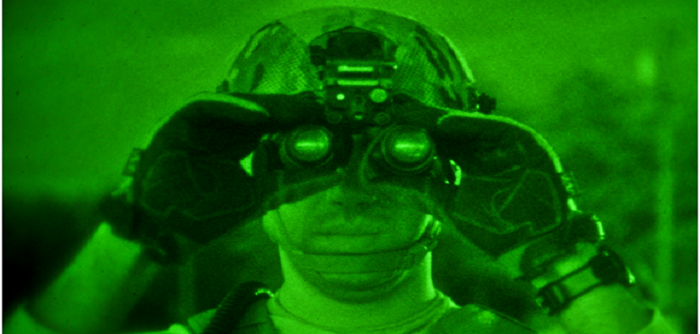It’s crazy to think that night vision technology has been around for close to a century at this point. After Hungarian physicist Kálmán Tihanyi invented the first night vision electronic television camera in 1929 and then early goggles proliferated in use during World War II, this game-changing method of sight has never stopped evolving. So much so, that there are five distinct generations of night vision technology that are generally all still available on the market.
While the military and police forces are the biggest users of night vision goggles and cameras, they are readily available to the public as well. Knowing what capabilities go along with what generation, however, is the tricky part. Here’s a rundown.
The earliest wave of night vision devices are generally referred to as Generation 0. These were what military units started utilizing in World War II and the subsequent Korean War. The technology behind these relied solely on active infrared, meaning that a projection unit called an IR illuminator would beam out near-infrared light from the goggles. While invisible to the naked eye, this light would reflect off objects and send signals back to the goggles to map out the landscape in the display. The problem with this system was that the electron acceleration necessary for this process to work would distort the image and make the device burn out faster.
To remedy this, Generation 1 devices came along and switched to a passive infrared method. What these did differently were to use actual light from the moon and stars instead of having to project infrared light from the goggles. Sounds great… until you need to use them during a cloudy or moonless night, in which case, results may vary. Additionally, the problems with image distortion and power life didn’t really go away here.
Generation 2 devices signalled some major improvements in night vision technology, however. The use of advanced image-intensifier tubes meant that users could see a lot clearer than ever before, regardless of the amount of natural light available. Adding a microchannel plate to the image-intensifier tube achieved this, as the number of electrons would increase during use, making for brighter and more detailed images.
From here we enter the phase of devices that are in most common use today. Generation 3 devices are today’s go-to for the U.S. military and they basically just boast an even better resolution, due to more efficient conversion of photons to electrons during the process. The last phase, Generation 4, is the way of the future, as it adds an automatic gated power supply system so that the device can adapt instantaneously to changes in light. So if a light was suddenly turned on in a previously dark environment, the user wouldn’t be temporarily blinded.
Typically, these last two devices are pretty expensive for the average somebody to purchase, which is why the earlier generations still hang around. There’s no doubt that night vision devices will keep developing and the prices will keep adjusting accordingly.
Source: How Stuff Works
Image source: Task & Purpose





Leave a Reply